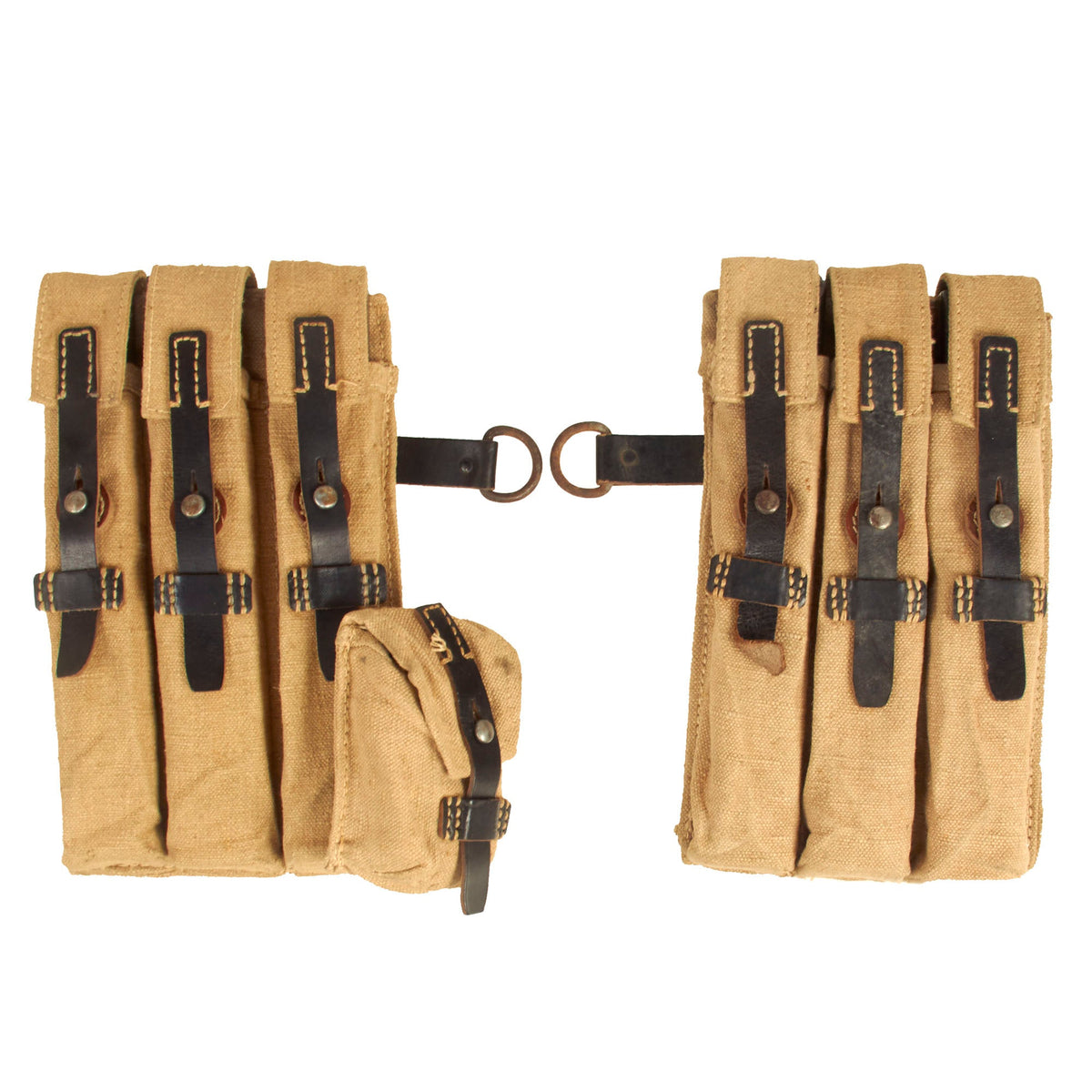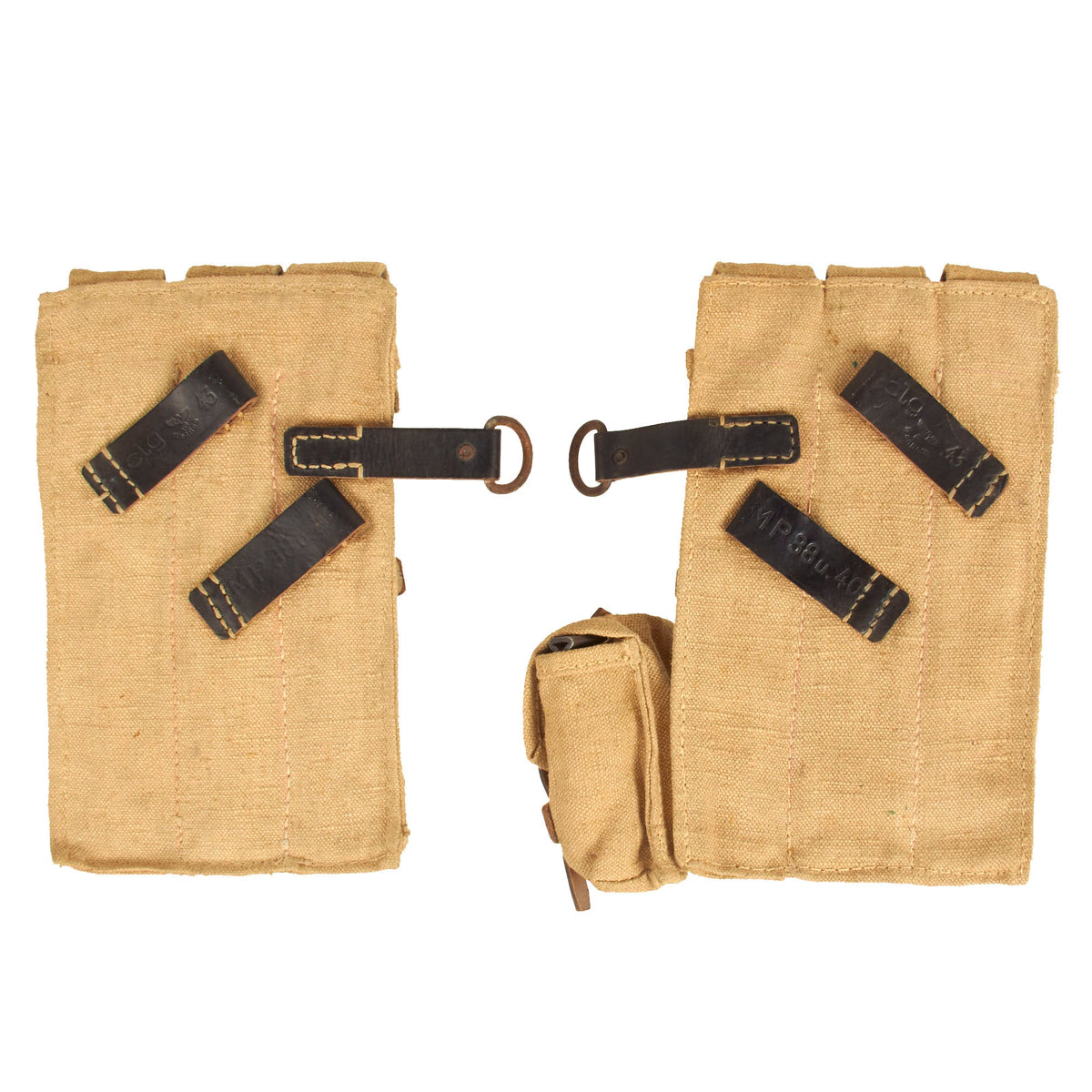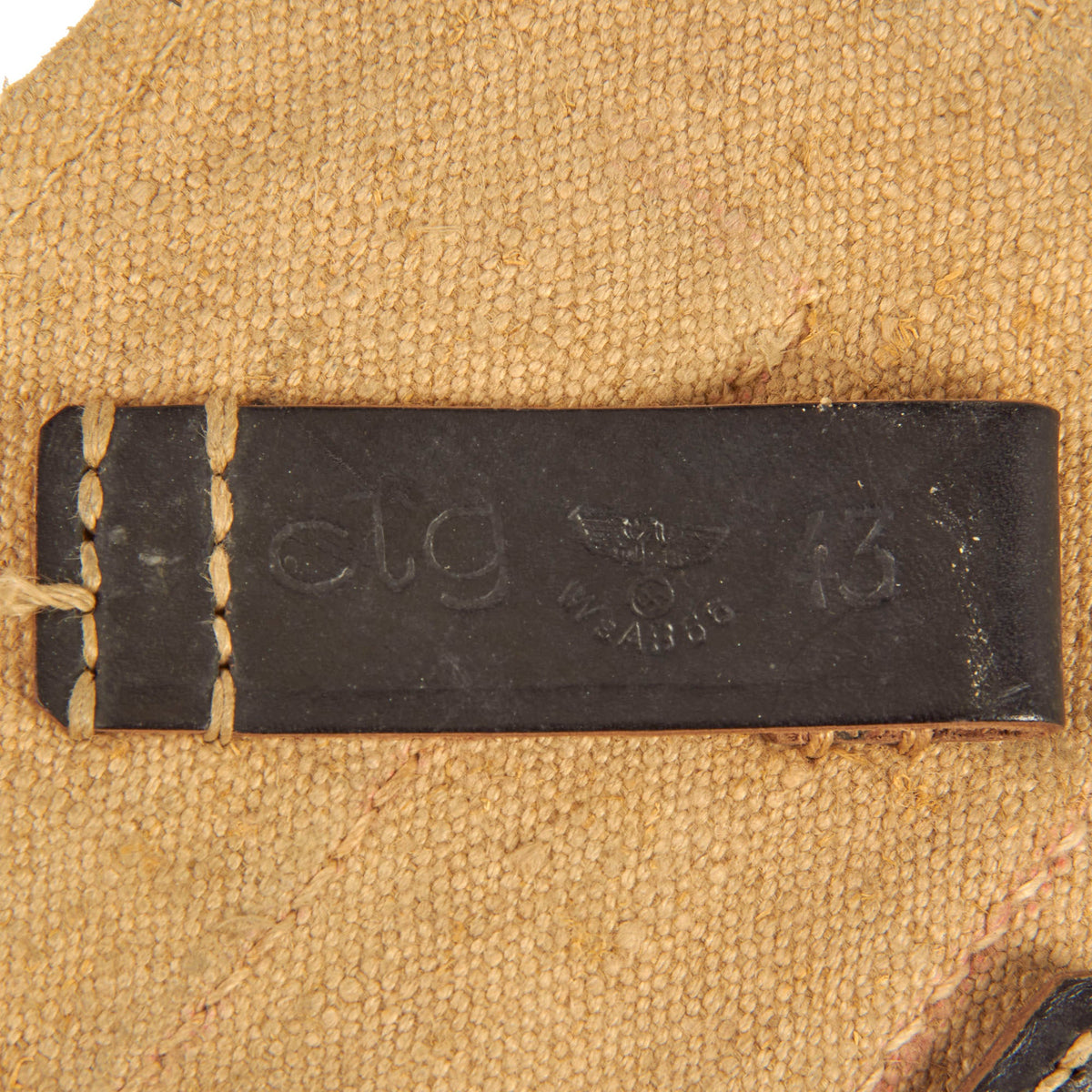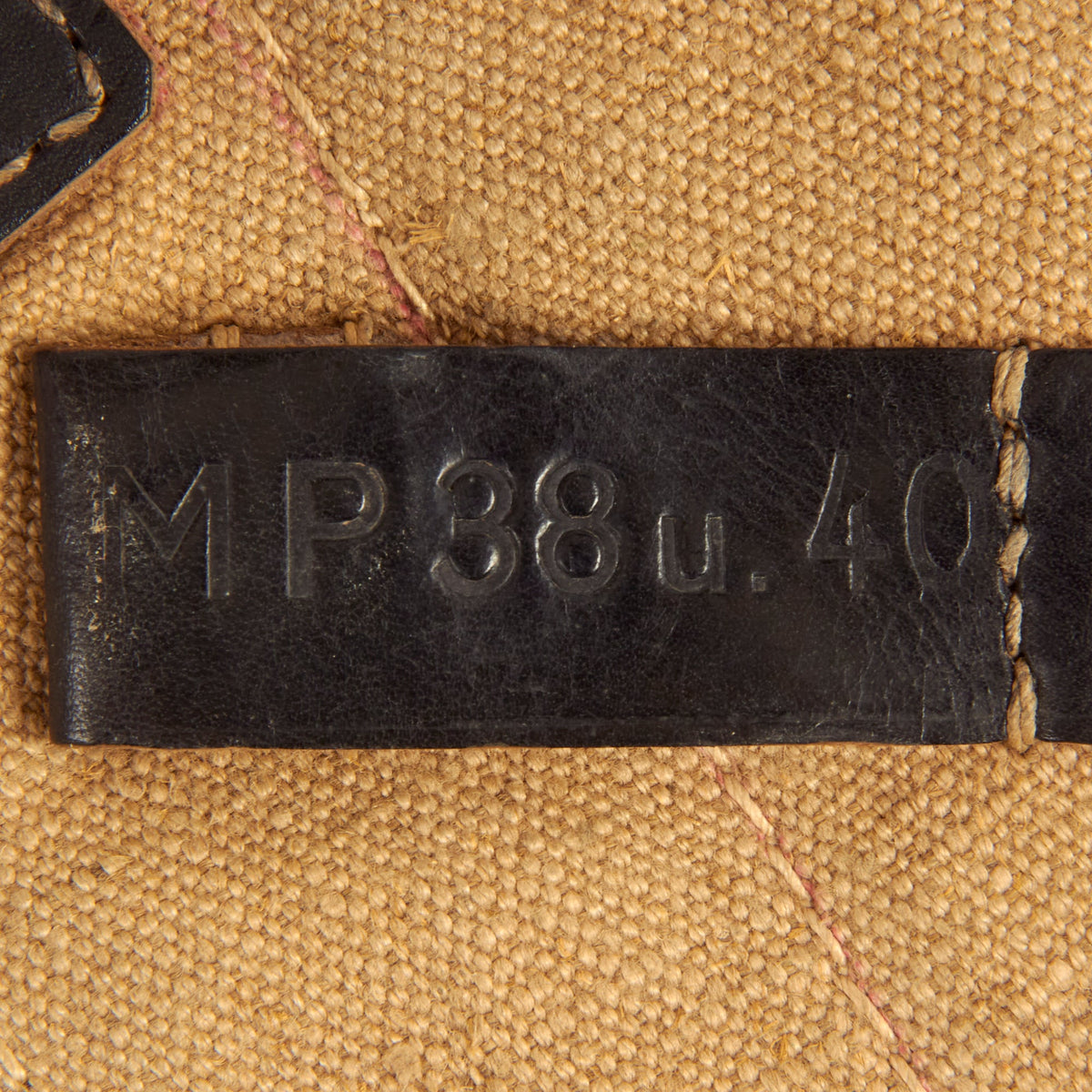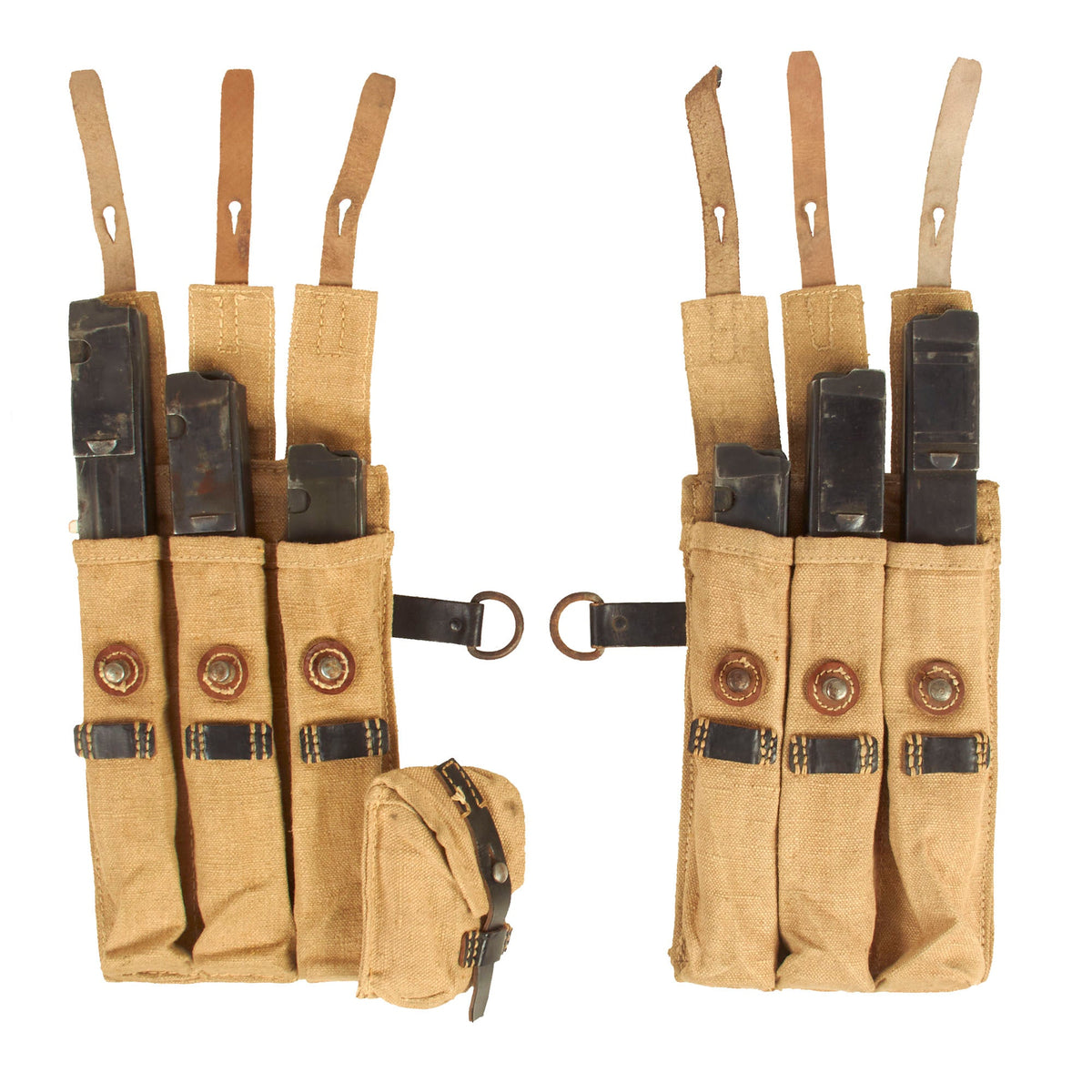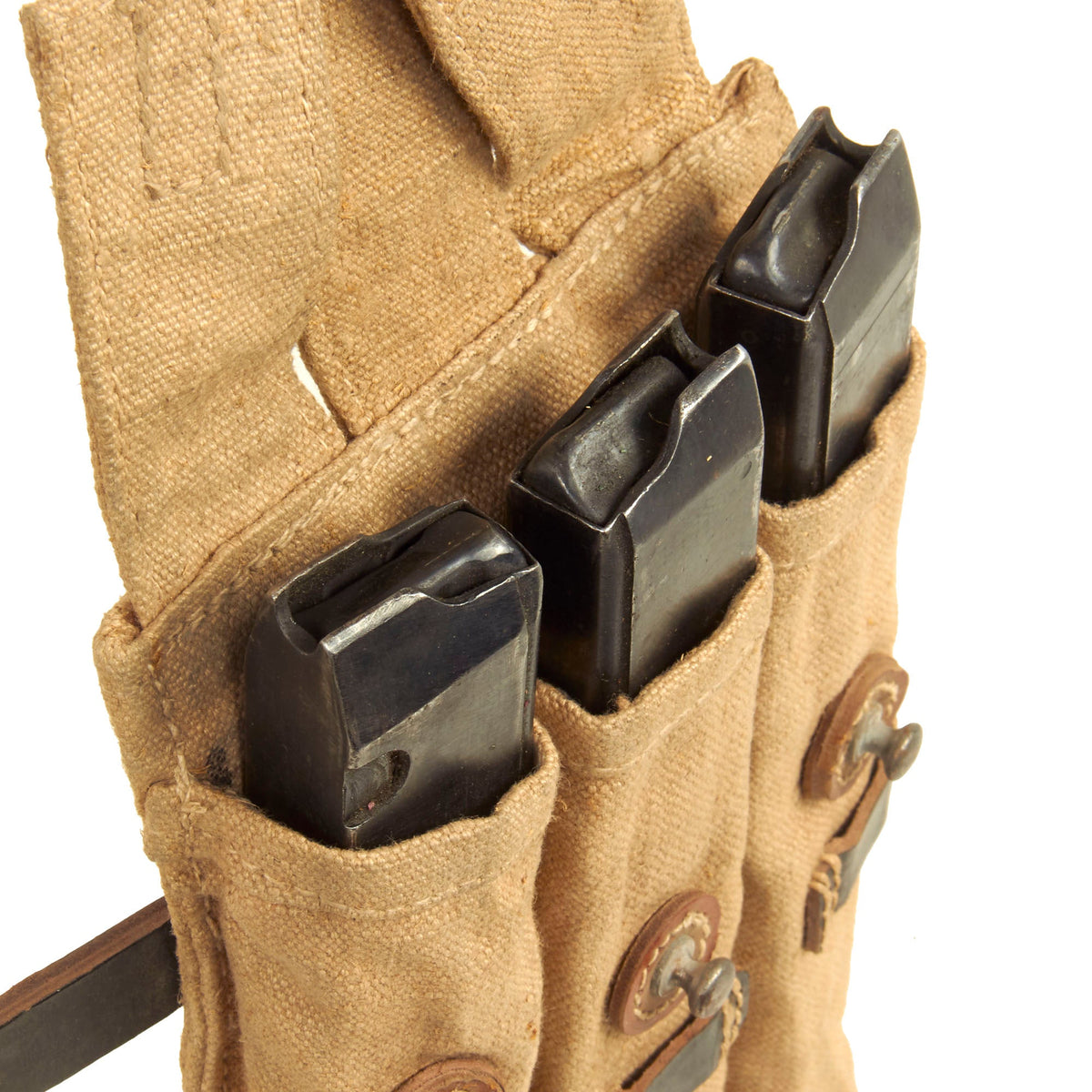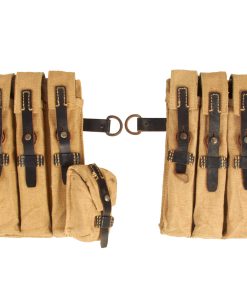Original German WWII 1943 Dated Matched Pair of MP 40 Tropical Afrika Korps Magazine Pouches by Ernst Melzig Original Items
$ 2.295,00 $ 573,75
Original Items: Only One Pair Available. Here we have a great lightly used matched pair (left and right) of highly desirable German WWII MP 40 magazine pouches, with a magazine loader pocket on the left side pouch. Constructed from tan blended webbing material as seen on other period German WW2 field gear used in North Africa and Italy (although used everywhere the Wehrmacht fought during WWII). The rectangular stitching on the bottom of the pockets is a known feature for the maker Ernst Melzig. The leather belt loops on the back of the pouches are well marked with the maker, date, and model of magazine it was designed for:
clg 43
MP 38 u. 40
There are also Waffenamt WaAB66 inspection stamps next to the maker code on both sides, which records indicate is the correct code for this maker. The leather components are still in great shape, mostly soft and pliable, and there are even still traces of the original markings on the canvas that indicated where the stitches were to be placed.
Overall in very good lightly used condition with all studs in place and tight stitching, perfect for display!
NOTE: THE PICTURED MAGAZINES ARE NOT INCLUDED. We use them for photography purposes only.
History of the German Africa Corps
The Afrika Korps or German Africa Corps (German: Deutsches Afrikakorps, DAK) was the German expeditionary force in Africa during the North African Campaign of World War II. First sent as a holding force to shore up the Italian defense of their African colonies, the formation fought on in Africa, under various appellations, from March 1941 until its surrender in May 1943. The unit’s best known commander was Field Marshal Erwin Rommel.
The dry climate of Africa proved to be an issue with much of the standard leather field gear that the German Army usually used. It would dry out and crack quickly, and become unusable. To deal with this, the standard field gear such as belts, Y-straps, A-frames, bayonet frogs, and other items, were issued in special tropical web versions.
History of the MP40
The Maschinenpistole 40 (“Machine pistol 40”) descended from its predecessor the MP 38, which was in turn based on the MP 36, a prototype made of machined steel. The MP 36 was developed independently by Erma Werke’s Berthold Geipel with funding from the German Army. It took design elements from Heinrich Vollmer’s VPM 1930 and EMP. Vollmer then worked on Berthold Geipel’s MP 36 and in 1938 submitted a prototype to answer a request from the Heereswaffenamt (Army Weapons Office) for a new submachine gun, which was adopted as MP 38. The MP 38 was a simplification of the MP 36, and the MP 40 was a further simplification of the MP 38, with certain cost-saving alterations, most notably in the more extensive use of stamped steel rather than machined parts.
It was heavily used by infantrymen (particularly platoon and squad leaders), and by paratroopers, on the Eastern and Western Fronts. Its advanced and modern features made it a favorite among soldiers and popular in countries from various parts of the world after the war. It was often erroneously called “Schmeisser” by the Allies, despite Hugo Schmeisser’s non-involvement in the weapon’s design and production. From 1940 to 1945, an estimated 1.1 million were produced by Erma Werke.
Fast Shipping with Professional Packaging
Thanks to our longstanding association with UPS FedEx DHL, and other major international carriers, we are able to provide a range of shipping options. Our warehouse staff is expertly trained and will wrap your products according to our exact and precise specifications. Prior to shipping, your goods will be thoroughly examined and securely secured. We ship to thousands clients each day across multiple countries. This shows how we're dedicated to be the largest retailer on the internet. Warehouses and distribution centres can be located throughout Europe as well as the USA.
Note: Orders with more than one item will be assigned a processing date depending on the item.
Before shipping before shipping, we'll conduct a thorough inspection of the items you have ordered. Today, the majority of orders will be delivered within 48 hours. The delivery time will be between 3-7 days.
Returns
The stock is dynamic and we cannot completely manage it because multiple stakeholders are involved, including our factory and warehouse. So the actual stock may alter at any time. It's possible that you may not receive your order once the order has been made.
Our policy is valid for a period of 30 days. If you don't receive the product within 30 days, we are not able to issue a refund or an exchange.
You can only return an item if it is unused and in the same state as the day you received it. You must have the item in its original packaging.
Related products
Uncategorized
Armoured Fighting Vehicles of the World: AFVs of World War One (Hardcover Book) New Made Items
Uncategorized
Uncategorized
Uncategorized
Uncategorized
Armored Burgonet Helmet & Polearm from Scottish Castle Leith Hall Circa 1700 Original Items
Uncategorized
Uncategorized
Uncategorized
Uncategorized
Uncategorized
Uncategorized
Uncategorized
Uncategorized
Australian WWII Owen MK1 Machine Carbine SMG Custom Fabricated Replica with Sling Original Items
Uncategorized
Uncategorized
Uncategorized
Uncategorized
Uncategorized
Band of Brothers ORIGINAL GERMAN WWII Le. F.H. 18 10.5cm ARTILLERY PIECE Original Items
Uncategorized
Uncategorized
Uncategorized
